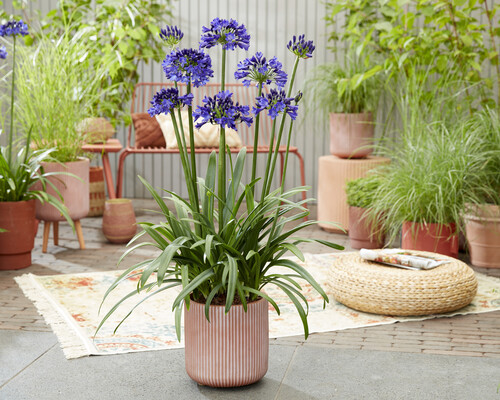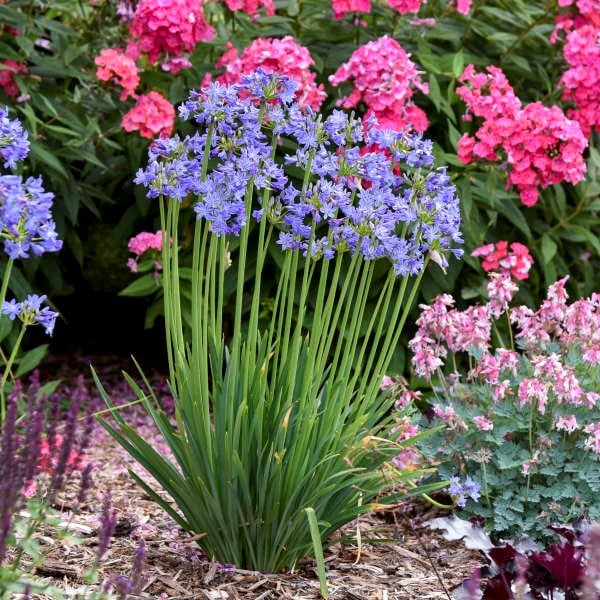Mastering the Art of Agapanthus Care: Vital Steps for Healthy Development and Lively Blooms
In the world of gardening, the growing of agapanthus stands as a fulfilling undertaking for those that look for to support these stylish blooming plants. From selecting the right variety to mastering trimming strategies, the journey in the direction of cultivating thriving agapanthus plants is multifaceted and holds the crucial to opening the full possibility of these organic treasures.

Picking the Right Agapanthus Variety

When selecting the best Agapanthus selection for your yard, consider factors such as environment viability, bloom shade, and development routine. Agapanthus, typically understood as Lily of the Nile or African lily, is available in a selection of shades varying from shades of purple and blue to white. Choose a flower shade that complements your existing yard scheme to produce a harmonious landscape. In addition, take into consideration the environment in your region to ensure the Agapanthus variety you select can thrive in your details problems. Some ranges are a lot more tolerant of cool temperatures, while others like warmer climates. Recognizing the growth habit of different Agapanthus ranges is crucial for appropriate positioning within your garden. Some ranges have a clumping development practice, suitable for containers or borders, while others have an even more dispersing nature, ideal for ground cover or mass growings. By meticulously assessing these factors, you can choose the excellent Agapanthus variety to enhance the beauty of your yard.
Ideal Growing Conditions
Taking into consideration the optimal environmental demands is crucial for successful Agapanthus farming. Agapanthus flourishes in well-draining dirt with a somewhat acidic to neutral pH level. When planting, pick a location that receives full sunlight to partial color. In hotter environments, offering some mid-day shade can stop scorching of the leaves. Agapanthus plants are delicate to chilly temperatures and must be protected from frost throughout winter season.
To guarantee healthy and balanced development and lively blooms, plant Agapanthus light bulbs at a deepness of regarding 2-4 inches and area them 8-12 inches apart. Mulching around the base of the plants assists maintain moisture and suppresses my latest blog post weed development.
Watering and Feeding Tips
Keeping appropriate wetness degrees and offering necessary nutrients are vital elements in the treatment regimen for Agapanthus plants. When it comes to sprinkling Agapanthus, it is crucial to strike a balance. These plants favor regularly damp soil yet are susceptible to root rot if overwatered.
Fertilizing Agapanthus is important for advertising healthy and balanced growth and prolific blossoms. Apply a balanced plant food, such as a 10-10-10 formula, in the early springtime as brand-new development emerges. Repeat this application every 6-8 weeks throughout the expanding season. Avoid extreme fertilization, as it can lead to lush foliage at the expense of flowers. Always comply with the supplier's directions for correct dilution and application techniques. By complying with these watering and fertilizing pointers, you can visit this site right here ensure your Agapanthus plants thrive and create vivid, durable flowers.
Pruning Strategies for Agapanthus
Trimming Agapanthus plants at the proper times and with proper techniques is critical for keeping their health and promoting ideal development and flowering. The optimal time to trim Agapanthus is in late winter or very early spring before brand-new growth emerges.
Deadheading invested blossoms can likewise redirect the plant's energy right into producing more flowers rather than setting seeds. If you want to accumulate seeds for proliferation, leave some flowers to completely dry and mature on the plant.
Bear in mind to use clean, sharp devices to make precise cuts and lower the threat of presenting diseases. Agapanthus. Regular trimming will certainly help keep your Agapanthus looking healthy and balanced and cool while guaranteeing a plentiful display screen of attractive flowers
Taking Care Of Common Pests and Conditions
After making certain correct pruning strategies for Agapanthus, it is vital to address typical pests and diseases that can affect the wellness and vigor of these plants. One typical bug that influences Agapanthus is the Agapanthus gall midge.
In addition, Agapanthus plants can suffer from root rot if they are grown in inadequately draining dirt. By being alert and taking prompt action versus diseases and insects, you can assist your Agapanthus plants flourish and produce lively flowers. Agapanthus.

Conclusion
To conclude, understanding the art of agapanthus care includes choosing the ideal variety, giving suitable growing conditions, proper watering and feeding, appropriate pruning techniques, and dealing with common parasites and diseases. By following these necessary steps, you can ensure healthy development and vibrant blossoms for your agapanthus plants. Bear in mind to consistently monitor you could look here and keep your plants to advertise their overall well-being and durability.
To ensure healthy development and lively flowers, plant Agapanthus light bulbs at a deepness of regarding 2-4 inches and area them 8-12 inches apart. By following these watering and fertilizing ideas, you can guarantee your Agapanthus plants prosper and generate lively, lasting flowers.
One common parasite that impacts Agapanthus is the Agapanthus gall midge. In addition, Agapanthus plants can endure from root rot if they are grown in poorly draining pipes dirt. By adhering to these vital actions, you can ensure healthy and balanced development and lively blossoms for your agapanthus plants.